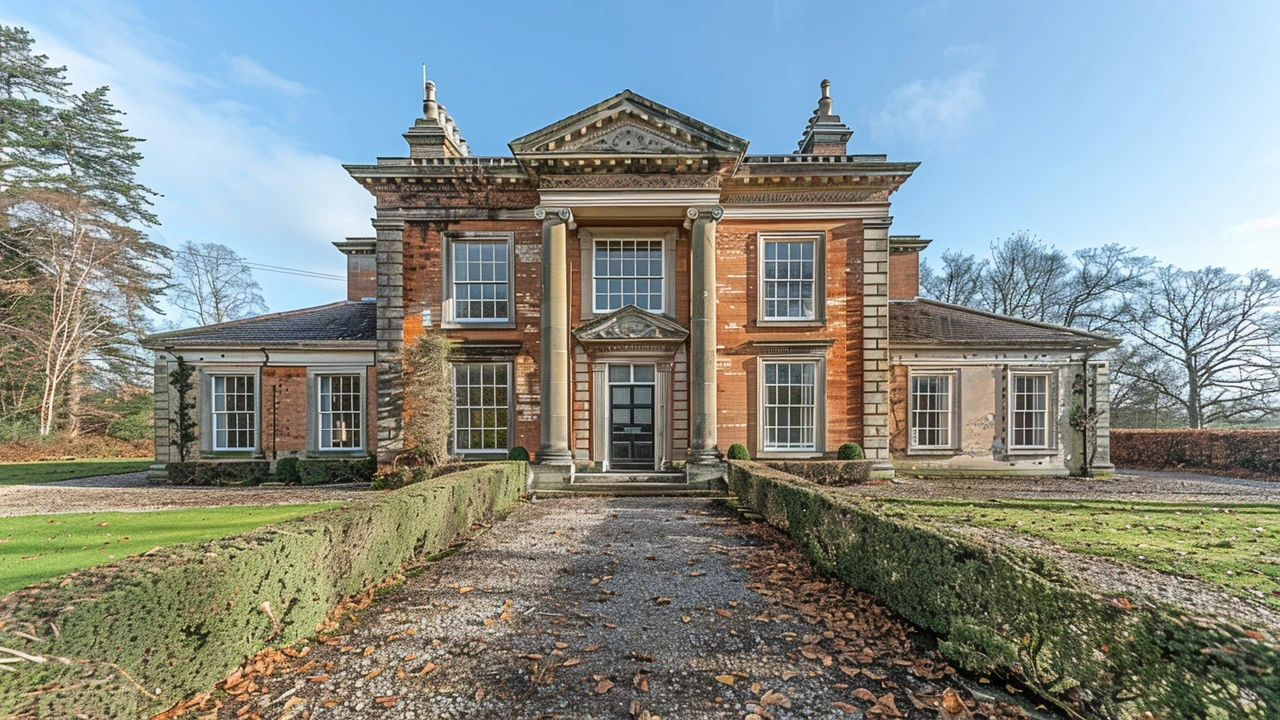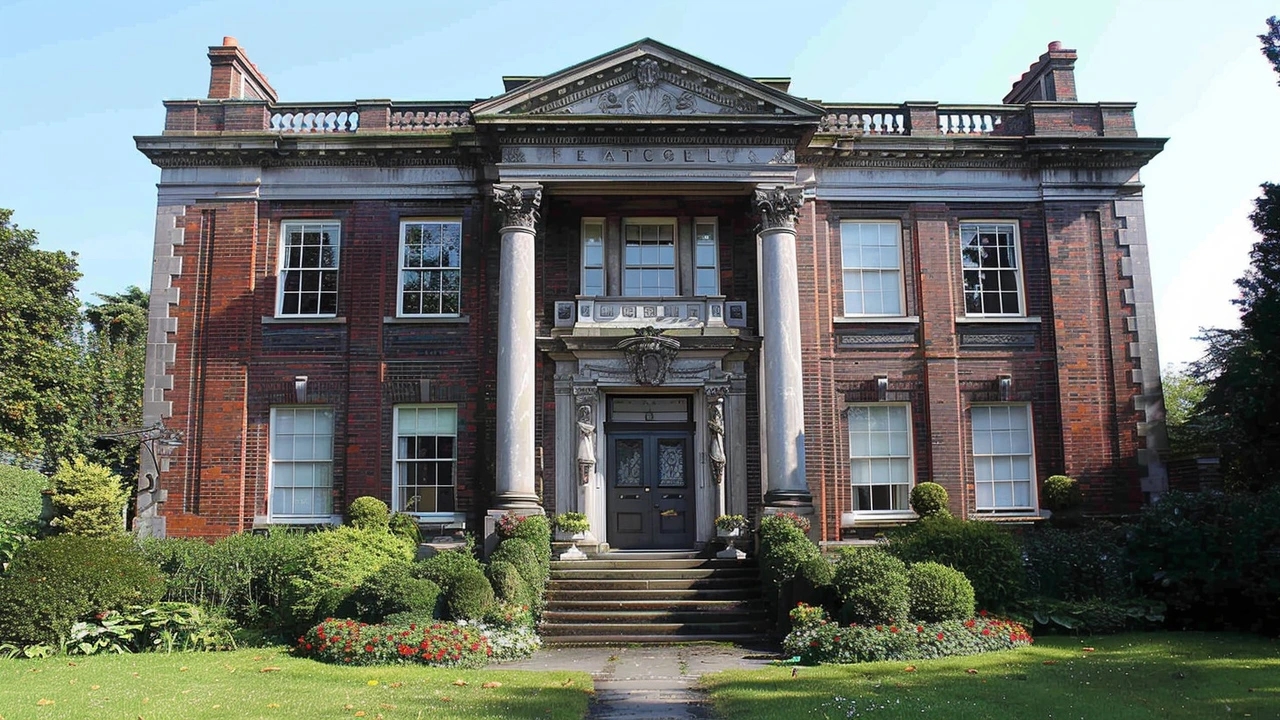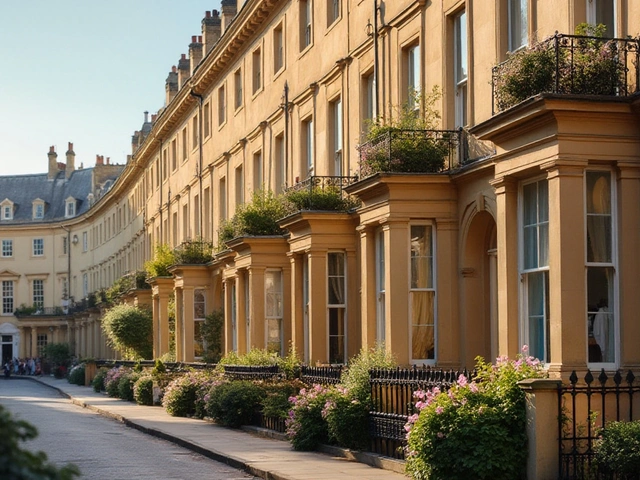Georgian architecture is a classic style that emerged in the 18th century, known for its elegant and balanced designs. Over the years, its influence has persisted, seeping into the frameworks of modern architecture.
In this article, we dive into how elements of Georgian architecture continue to shape contemporary design. The beauty of this architectural form lies in its symmetry, proportions, and understated elegance.
By understanding its historical context and key features, you can see how these principles are applied today. And for those keen on incorporating these timeless elements into their projects, read on for some practical tips.
- Historical Background
- Key Characteristics of Georgian Architecture
- Modern Adaptations
- Practical Tips for Incorporation
Historical Background
Georgian architecture emerged during the reigns of the first four British monarchs of the House of Hanover—George I, II, III, and IV—spanning from 1714 to 1830. This style is closely tied to the Enlightenment, a period emphasizing reason and logic. Architects of the time were deeply influenced by the classical architecture of ancient Greece and Rome, aiming to capture its symmetry and proportion in their designs.
One of the hallmarks of Georgian architecture is its pursuit of balance and order. This was achieved through the use of rigid geometric proportions and simple, yet elegant, decorative elements. Architects like Robert Adam and Sir William Chambers helped popularize this style, bringing it to both public buildings and private homes across Britain and eventually its American colonies.
A well-known example of Georgian architecture is the Somerset House in London, designed by Sir William Chambers in the late 18th century. The building’s grand façades, balanced windows, and classical columns encapsulate the style’s essence. This design isn't just limited to opulent buildings; it extended into more humble dwellings, with rows of Georgian terraced houses becoming a common sight.
The Georgian era was also marked by economic growth, political stability, and overseas expansion. These factors contributed to a surge in building activity, and the style spread far and wide. Cities like Bath and Dublin experienced urban development heavily influenced by Georgian aspirations, evident in landmarks like the Royal Crescent in Bath and Dublin's Merrion Square.
“The elegance of the Georgian architectural era lies in its harmony and adherence to classical principles,” notes the architectural historian Dan Cruickshank. This adherence to classical ideals helped Georgian buildings achieve a timeless quality that still resonates today.
Georgian architecture wasn’t just a British phenomenon. As British colonists settled in North America, they brought their architectural preferences with them. In the United States, many of the early buildings in cities such as New York, Philadelphia, and Boston were constructed in the Georgian style. Independence Hall in Philadelphia is a notable example, showcasing brick construction, symmetry, and a sense of grandeur—core tenets of Georgian design.
Throughout history, Georgian architecture has been admired for its elegance and orderliness. Its balanced proportions, classical elements, and emphasis on harmony have laid a foundation that continues to inspire modern architecture. By learning about this style’s rich history, we gain a deeper appreciation for its enduring influence on today’s building standards.

Key Characteristics of Georgian Architecture
Georgian architecture is a defining style from the 18th century that reflects a deep commitment to symmetry, proportion, and classical details. This style emerged during the reigns of the first four British monarchs of the House of Hanover—George I through George IV. It is largely influenced by the works of Andrea Palladio, an Italian Renaissance architect known for his symmetrical designs.
One of the most notable features of Georgian architecture is its strict emphasis on symmetry. Buildings often have a centrally located front door, flanked by an equal number of windows on either side. The use of brick, typically laid in a Flemish bond pattern, further accentuates this balanced aesthetic. The roofs are usually made of slates or tiles, often with a minimal slope, and embellished with decorative cornices and eaves.
Windows in Georgian buildings are another key feature. They commonly feature small panes and sash windows, each operated by a system of weights and pulleys. This not only had practical ventilation benefits but also enhanced the geometric regularity of the structures. Original Georgian windows were usually six-over-six or nine-over-nine sash windows, designed to be elegant and functional.
The use of classical elements like columns and pilasters is very common. These elements often frame doorways and are sometimes used to support pediments—a triangular upper part of the front of the building—adding to the grandeur and formality of the design. Columns are typically of the Ionic or Corinthian order, both of which are known for their ornate capitals.
Interiors of Georgian homes adhere to the same principles of symmetry and proportion. Room layouts are often meticulously planned to create a harmonious flow. Walls are commonly adorned with wood paneling, moldings, and decorative plasterwork. Fireplaces serve as central focal points in rooms, surrounded by intricately designed mantels.
Interestingly, Georgian architecture isn't just about aesthetics. It's about creating spaces that feel orderly and serene. The measured beauty of these designs has an almost calming effect, underlining the importance of balance in both structure and detail. As architectural historian John Summerson noted, "The Georgian style was rooted in the values of order, symmetry, and proportion, which were seen as reflections of natural and divine law."
"The Georgian period is one of the last great European styles," said Hugh Petter, a renowned architect. "Its architectural language offers a timeless quality that blends form and function with grace and utility."
To add to its allure, the Georgian style often incorporated local materials and construction methods, making each building uniquely tied to its geographical context. This adaptability ensured that while Georgian buildings shared core principles, they also offered a variety of regional characteristics.
Finally, decorative elements like wrought-iron fences, intricate fanlights above doors, and classical reliefs add to the overall majesty of Georgian architecture. These fine details not only serve aesthetic purposes but also indicate the craftsmanship and precision that went into constructing these homes. For those interested in integrating Georgian features into modern designs, paying attention to these key characteristics can provide both inspiration and practical guidelines.

Modern Adaptations
Georgian architecture holds a timeless appeal that has been skillfully adapted into modern design. Architects and designers today borrow and build upon its principles, infusing contemporary spaces with the charm and elegance of the 18th century. The essence of these practices hinges on symmetry, balance, and classical details.
One of the significant ways Georgian design manifests in modern architecture is through the use of proportional layouts. Rooms are often planned with a focus on symmetry, creating a sense of order and harmony. In today's homes, this can be seen in the balanced arrangement of windows, doors, and other architectural elements.
Another key adaptation is in the decorative details. The clean lines and subtle embellishments of Georgian interiors have found their way into contemporary spaces. Cornices, moldings, and wainscoting are elements frequently used to add sophistication to a room. These features, while originally more ornate, are now often simplified to suit modern tastes.
Materials and craftsmanship also reflect a modern take on Georgian principles. While traditional Georgian homes were built with brick and stone, modern interpretations might use different materials such as steel or glass. These materials enable a blend of old and new, maintaining the integrity of Georgian design while incorporating modern technologies and sustainable practices.
Interestingly, the use of color has also evolved. While Georgians favored a palette of soft, muted tones, contemporary designs play with a wider spectrum, adding bold pops of color to create contrast and interest. This experimentation does not undermine the classic aesthetic but instead breathes new life into it.
Open floor plans, a staple in modern homes, can still honor Georgian roots. By maintaining focal points and balanced arrangements within these open designs, it's possible to retain the spirit of traditional architecture while benefiting from modern spatial concepts. This blend enhances both functionality and aesthetic appeal.
In commercial architecture, Georgian influences are equally prominent. Office buildings and institutional spaces often feature grand entrances and symmetrically placed windows, reminiscent of 18th-century design. These elements help create a professional and inviting environment.
Additionally, advancements in technology have allowed for precise recreations of Georgian elements. CNC machining, 3D printing, and other modern fabrication methods enable designers to replicate intricate details efficiently and cost-effectively. This technological synergy between old and new ensures that Georgian architecture continues to be relevant and admired.
“The timeless qualities of Georgian architecture make it an ideal blueprint for modern design. By integrating its principles, we create spaces that are not only beautiful but also harmonious and enduring.” – John Simpson, renowned classical architect
For those looking to incorporate these elements into their own projects, consider starting with a few key features. Symmetrical layouts, detailed moldings, and a restrained yet elegant color palette can transform any space into a modern homage to Georgian design. The enduring appeal of this style lies in its ability to adapt and evolve while retaining its fundamental principles.

Practical Tips for Incorporation
Integrating elements of Georgian architecture into modern designs can bring a timeless elegance to any project. The first step to doing this is to understand the style's key features: symmetry, proportion, and simplicity in decoration. Modern architects and designers often look to these principles when creating spaces that are both functional and aesthetically pleasing.
One effective way to incorporate Georgian style is through the use of symmetrical layouts. Georgian homes often featured a central hallway with rooms balanced on either side. In modern homes, this can be adapted by designing symmetrical facade elements or balanced floor plans that create a sense of harmony and order.
Another hallmark of Georgian architecture is the use of proportional windows. Traditional Georgian homes often included sash windows with a 3:5 ratio. Contemporary designs can mirror this with large, evenly spaced windows that allow for ample natural light while keeping the classical proportions that define Georgian aesthetics.
Decorative elements such as cornices, columns, and pilasters can also bring a touch of Georgian charm into modern spaces. While full classical columns may not fit every modern design, simplified versions can be used in entrances or around fireplaces to add depth and character.
Contemporary interiors can benefit from the minimalist opposed to Georgian interior. This involves using materials like hardwood floors and understated moldings to evoke historical elegance without overwhelming the modern vibe. Keeping color palettes neutral and soft can also help maintain this balance.
Incorporating Georgian-inspired doors is another practical tip. These doors, often paneled and sometimes featuring fanlights, can be a stunning feature in an entryway or as internal doors that add character and sophistication.
For those interested in exterior design, consider using brickwork and stone common in Georgian buildings. Modern brick veneers or stone facades can replicate the historic look while using contemporary materials and techniques for improved durability and insulation.
“Good design is about making places better for people,” said the esteemed architect Norman Foster. Embracing elements from historical styles like Georgian architecture can certainly contribute to that goal, blending tradition with modern innovation.
When aiming for a Georgian look, it's crucial to focus on details. Incorporating elegant ironwork for railings, gates, or even lanterns can reflect the intricate craftsmanship typical of the era. These touches can dramatically enhance curb appeal and evoke a sense of history.
Ultimately, the key to successfully integrating Georgian elements into modern design is balance. By thoughtfully blending symmetry, proportion, and classical touches with contemporary needs and styles, you can create spaces that are not only beautiful but also have a lasting impression of timeless sophistication.





